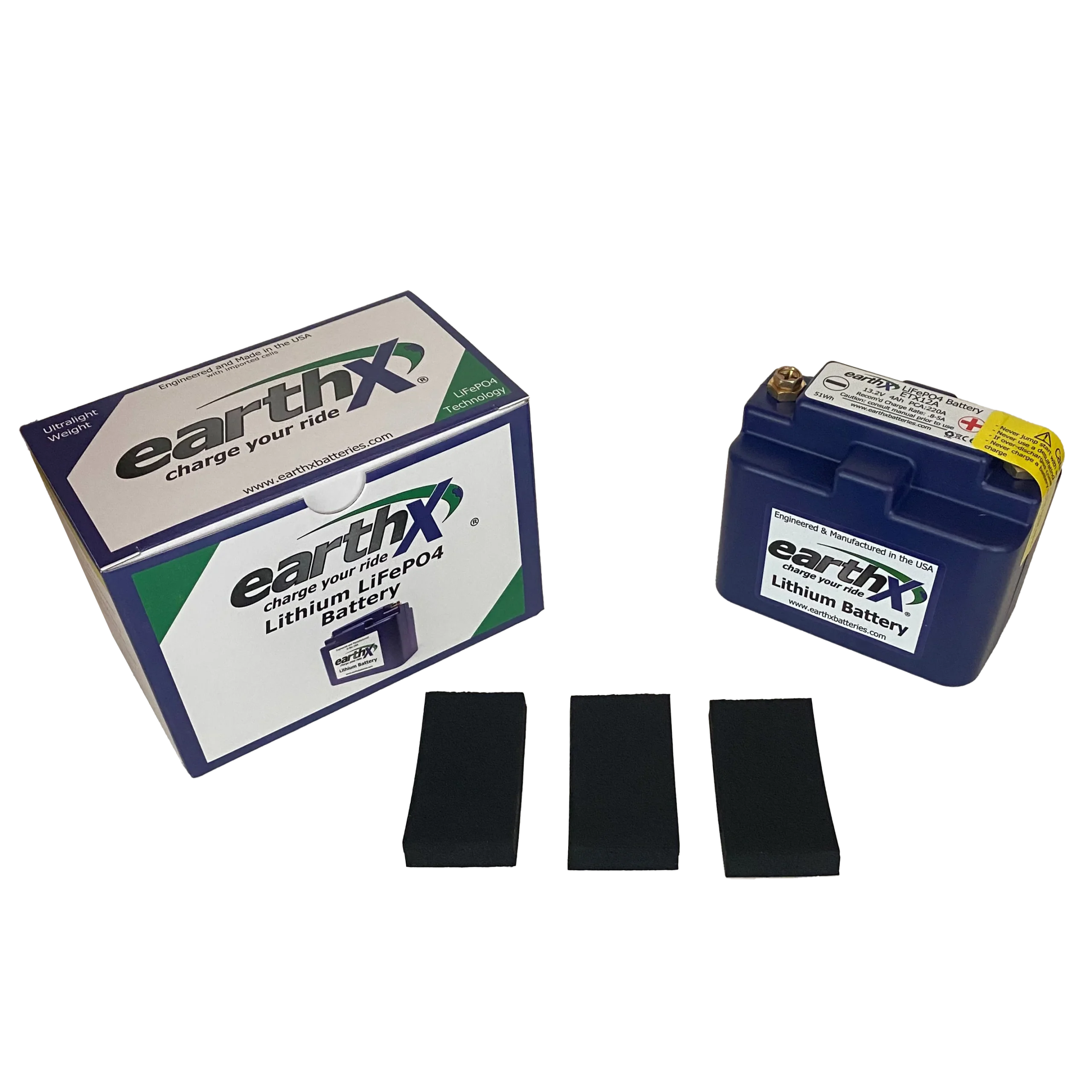You are using an out of date browser. It may not display this or other websites correctly.
You should upgrade or use an alternative browser.
You should upgrade or use an alternative browser.
Is there a special way to charge a lithium battery?
- Thread starter timtune
- Start date
https://www.amazon.ca/BikeMaster-Lithium-Ion-Battery-Maintainer-TS0207A/dp/B0167JU8VI i dont know what the difference is between this and a "normal" charger
TK4
Well-known member
With the proper charger -

 fortnine.ca
or
fortnine.ca
or

 fortnine.ca
fortnine.ca

BikeMaster Lithium Ion Battery Charger - 150906
Purchase the BikeMaster Lithium Ion Battery Charger - TS0207A at Canada's Motorcycle. Free shipping and Easy returns.

Shorai LFX Lithium Battery Charger - SHO-BMS01
Purchase the Shorai LFX Lithium Battery Charger - SHO-BMS01 at Canada's Motorcycle. Free shipping and Easy returns.
Was it a trickle charger or maintainer lots of trickle chargers don't shut off ever and can wreck lead batteries as well. A lithium charger has a higher voltageBuddy had this battery on the trickle charger. Couple hours later the garage was full of smoke.....View attachment 64061

Sent from the future
Minor digging finds that battery is supposed to have an integrated BMS, so it shouldn't need anything fancy. Note the voltage and current limits on the label. It has to be something that doesn't exceed those limits. A dumb trickle charger might.
A "GOOD" lithium charger will have a chip that communicates with the BMS. Not all have a BMS.
Pretty sure lithium batteries have a higher charging threshold voltage than a lead acid battery... like 15.5v IIRC. A lead acid battery charge threshold is 13.3v.
When you overcharge a lithium battery it does THAT. Charge it till it starts to heat up, then disconnect, you have a very small window between fully charged and blowing up. The higher quality the cells, the longer the window... but not much.
You want a special lithium battery charger, it's easier.
Pretty sure lithium batteries have a higher charging threshold voltage than a lead acid battery... like 15.5v IIRC. A lead acid battery charge threshold is 13.3v.
When you overcharge a lithium battery it does THAT. Charge it till it starts to heat up, then disconnect, you have a very small window between fully charged and blowing up. The higher quality the cells, the longer the window... but not much.
You want a special lithium battery charger, it's easier.
Relax
Well-known member
He just said "trickle charger". Don't know more than that.
If he doesn't know the details of his charger, then he definitely used the wrong type of charger. That's a n F'n Earth-X! It probably has the most advanced BMS on the market, and prevents over/undercharging, etc. My guess is he used a charger with desulphation mode.
Relax
Well-known member
With the proper charger -
or
BikeMaster Lithium Ion Battery Charger - 150906
Purchase the BikeMaster Lithium Ion Battery Charger - TS0207A at Canada's Motorcycle. Free shipping and Easy returns.fortnine.ca

Shorai LFX Lithium Battery Charger - SHO-BMS01
Purchase the Shorai LFX Lithium Battery Charger - SHO-BMS01 at Canada's Motorcycle. Free shipping and Easy returns.fortnine.ca
Well, the Shorai only works with Shorai batteries or others built similarly that have the leads to each of the individual cells accessible. Then the charger ensures that each individual cell is charged to the same amount (called balancing). In these batteries, there is no internal BMS - that's why the charger needs to do the balancing. And BMS is more than just charge balancing across cells, its also over/under charge protection, over-discharge, and some other features such as the push button "boost" which is just under-charge protection, but set to a higher threshold to allow starting at the press of an over-ride button).
Relax
Well-known member
A "GOOD" lithium charger will have a chip that communicates with the BMS. Not all have a BMS.
Pretty sure lithium batteries have a higher charging threshold voltage than a lead acid battery... like 15.5v IIRC. A lead acid battery charge threshold is 13.3v.
When you overcharge a lithium battery it does THAT. Charge it till it starts to heat up, then disconnect, you have a very small window between fully charged and blowing up. The higher quality the cells, the longer the window... but not much.
You want a special lithium battery charger, it's easier.
As far as I know, that's not how they work. Lithium chargers simply don't have a desulphation mode that will cause problems with the battery (such as shown), and they are set to the correct amperage and voltage for the chemistry. None rely on a BMS and there's no communication to the BMS. The whole point of the BMS is to act as the intermediary between the individual cells and the positive/negative leads.
The rate of discharge is not drastic for motorcycle batteries from what I notice. For the past 2 years, all I do is trickle charge it to full charge once a month or even once in 2 months (takes 3-4 hours maybe) and store it indoors. In that way, I'm not overcharging the battery and before I put the battery back into the bike, I charge if fully once again.
Relax
Well-known member
I prefer (quality) smart chargers/maintainers that let you set and forget.
It can and does, and is the common failure when the following 2 conditions are met:
1. the regulator isn't working properly and allows too high charging voltage
2. the battery has no BMS to protect itself from overcharging or overvoltage
If the charger used had no BMS to talk to the battery and this resulted, the bike's charging system is probably even dumber. So why doesn't this kind of battery damage happen on the bike?
It can and does, and is the common failure when the following 2 conditions are met:
1. the regulator isn't working properly and allows too high charging voltage
2. the battery has no BMS to protect itself from overcharging or overvoltage
guzzirider
Well-known member
Here is some interesting reading:
https://www.osha.gov/sites/default/files/publications/shib011819.pdf
Take note of the concern of charging Lithium batteries at below freezing.
eg. starting your bike in winter and having your on board charging system hit the battery at maximum charge rate.
Also take note where your battery resides as in under the seat.
https://www.osha.gov/sites/default/files/publications/shib011819.pdf
Take note of the concern of charging Lithium batteries at below freezing.
eg. starting your bike in winter and having your on board charging system hit the battery at maximum charge rate.
Also take note where your battery resides as in under the seat.
Chris-CJ
Well-known member
While on the topic of battery chargers, here is a review:Here is some interesting reading:
https://www.osha.gov/sites/default/files/publications/shib011819.pdf
Take note of the concern of charging Lithium batteries at below freezing.
eg. starting your bike in winter and having your on board charging system hit the battery at maximum charge rate.
Also take note where your battery resides as in under the seat.

สล็อตเว็บตรง API เว็บสล็อตแท้ ทรูวอเลท ไม่มีขั้นต่ำ แตกง่าย อันดับ 1
สล็อตเว็บตรง ไม่ผ่านเอเย่นต์ เล่นด้วยเงินจริง ถอนเงินได้จริง ผู้ให้บริการเกมสล็อต ที่ดีที่สุด เว็บสล็อต อันดับ 1 ไม่ล็อคยูส รองรับทรูวอเลท
 cleanenergysummit.org
cleanenergysummit.org
Be careful with most of those "review" sites. Conveniently, every single product they review is available on amazon through an affiliate link. Any product not available with an affiliate link is not included in the reviewed samples. That one also has some clear errors in it (ie charger did not come with cables and they need to be purchased separately???? Aw hell no. Either that is AI making stuff up or they looked at a returned product).While on the topic of battery chargers, here is a review:

สล็อตเว็บตรง API เว็บสล็อตแท้ ทรูวอเลท ไม่มีขั้นต่ำ แตกง่าย อันดับ 1
สล็อตเว็บตรง ไม่ผ่านเอเย่นต์ เล่นด้วยเงินจริง ถอนเงินได้จริง ผู้ให้บริการเกมสล็อต ที่ดีที่สุด เว็บสล็อต อันดับ 1 ไม่ล็อคยูส รองรับทรูวอเลทcleanenergysummit.org
Lithium Iron batteries (I assume that is what was being charged) don't need anything special while being charged by the vehicle but generally do not like trickle chargers. IME most come with a warning not to use a regular trickle charger.
It looks like it used to be this.Lithium Iron batteries (I assume that is what was being charged) don't need anything special while being charged by the vehicle but generally do not like trickle chargers. IME most come with a warning not to use a regular trickle charger.

ETX12A
The ETX12A EarthX dirt bike lithium battery has 220 Peak Cranking Amps in a package that is just over a pound! View product details and purchase today.
LiFePO4.
How to Charge an EarthX Lithium Battery - EarthX Batteries
Learn about maintenance tips and guidelines for your EarthX lithium battery on how to properly charge your lithium battery.


















